By Samantha Rommel ’15
Studying Anthropology and Museum Studies
Imagining International Justice in Post-Genocide Cambodia
It’s been just over two weeks since I took the flight from Phnom Penh to Cincinnati, and I’ve had mixed feelings as I’ve adjusted back to life at home. On one hand, reuniting with family and friends has never been sweeter. I arrived back in the U.S. just in time for 4th of July celebrations, which I was able to spend at home surrounded by everyone I’d been missing for the past two months (not to mention all of the food that I’d been missing). However, coming back just days before a major national holiday was an electric shock back in to American culture. Sure, I had internet access in Cambodia and through the auspices of social media I was able to stay in touch with life back home, but I wasn’t engrossed in it. I was going out daily, soaking up all I could about Cambodian culture and focusing on my academic research. Reverse culture shock, turns out, is very real.
For example, the first thing I noticed when I arrived in the Philadelphia International Airport was that everyone was wearing shorts. While in Cambodia, I’m almost certain that the only people I saw wearing shorts were other tourists/foreigners. And rarely was there ever a man wearing shorts. What a trivial detail to be aware of! The next thing that seemed strange was that no one seemed to notice my existence. As I walked through the airport, no one was staring at me, kids weren’t waving at me, and store front workers weren’t trying to get me to come in to their store. When I walked around the book shop, no one came over to ask if I wanted this book or that one, or if I’d like to buy some new headphones, or perhaps a new CD, or how much I wanted to pay for one of those fancy travel neck pillows, or anything. I had become accustomed to the daily barrage of approaches and stares in just two months time, so much so that the opposite was unnerving.
Within these two weeks I’ve started to readjust, getting into a familiar routine, preparing for what will be my final year at Ohio University. Within the next few months, I will not only have to begin signing up to take the GRE and applying for master’s programs, but I will also have to start the second phase of ethnographic research: familiarizing myself with the data I’ve collected. With that stage will come a host of other issues to deal with, such as how to organize the data, what and how to write, where to publish, and how to emotionally and mentally process the experience. As I slowly start the process, I have realized how profoundly different I, and sub sequentially my project, have become. As I learned more from interviews and observations, I started to fine tune the concepts I was using to frame the research. A topic I considered to be fairly straight forward turned out to be quite complex. I couldn’t understand what justice meant in the context of a museum if I didn’t understand what it meant to people outside of the museum. In order to grasp how justice for crimes committed during the Khmer Rouge regime is conceptualized in Cambodia, I needed to know about the ECCC (the Khmer Rouge tribunal) and how it functions in society. I needed to research more about the background of the museums, such as when, how, and why they were formed. Background became especially important when I decided to broaden the scope of my research to include three museums: the Tuol Sleng Genocide Museum, the Choeung Ek Genocide Center, and the War Museum in Siem Reap.
While the museums are connected by the common thread of the war years in Cambodia (particular the Khmer Rouge), each prompts a different conception of justice in the museum visitor based on the content of the museum and the context in which it was formed. For instance, while Choeung Ek and Tuol Sleng are often seen as two parts of the same story (and they are often packaged as such), they are operated under very different ownership. Each utilizes different educational and curatorial techniques, which only helps to differentiate the experience the visitors have at the museums. The War Museum (which is in Siem Reap as opposed to Phnom Penh, where Choeung Ek and Tuol Sleng are located) is a unique center for learning. Not far off National Road 6, the museum is situated on just about 2 hectares (~5 acres) of land and acts as a final resting place for hundreds of weapons used during the war years in Cambodia, including land mines, small arms, tanks, and even a jet fighter aircraft. There are five guides, all either veterans or affected by war in some way. Unless you enter the space with a large working knowledge of weaponry, the educational foundation of the museum rests upon the insights of these five men. They are a wealth of knowledge, not just about the history of war in Cambodia or the tanks and minefields that they take you on a tour through, but of actual experiences of individuals during those times. It is through them that visitors are able to get a sense of what justice might look like for victims of the war.
I am daunted by the task of familiarizing myself with the information I collected during the course of my two month stay in Cambodia. Going back through all of those field notes will bring back emotions I wasn’t fully able to navigate while I was in field work mode. It will bring about questions of the ethics of ethnographic writing, my positionality while in the field, and how I should make sense of my experiences in Cambodia. I am nevertheless excited to unpack all of my experiences and data, to hypothesize how it all works and to present it to the academic world. This has been an opportunity to learn and grow, to develop myself professionally, and to contribute something, however small it might be, to academia.
None of this research would have been logistically possible without support from family, friends, and some very special people at Ohio University. Thank you to Dr. Christine Su and Dr. Haley Duschinski for organizing this opportunity and for helping to orchestrate support for the trip, along with the moral support you provided for us along the way. Thank you to Dr. Roxanne Male-Brune for helping a myself and a few other students to navigate the Student Enhancement Award and to Ann Bennett for the extra time you spent to ensure our funding was in order. Thank you to the Department of Sociology and Anthropology, especially Dr. Christine Mattley, for your support this research, as well as all of the faculty members in the anthropology department who have found the patience to teach me over these past three years. Special thanks to another patient teacher, Try, for not letting the five of us students wander off into Cambodia without knowing some of the language (at least enough to say hello and bargain), and Chetra for showing us just some of the fun you can have in Phnom Penh! More thanks to supporters our group had on GoFundMe, including Ansley Westbrook, Ellie Hamrick, Kim Williams, Anna Freeman, and our anonymous friend. Your generous donations helped pay a big part of our living expenses, and for that I am so thankful! To Mom (an avid reader of this blog), Dad, and my sisters, thank you for loving me enough to let me leave you for a little while to go on this adventure. And to Macklin, for calming all of my travel and homesick anxieties, you deserve a medal or something. Final, and most important, thanks to all of the individuals that took time to help me understand not just the museums, but life in Cambodia. Without you, I would know nothing and this project would be pointless. You have shaped not only the research, but the researcher, and for that I am so grateful.
Until we meet again, Cambodia!


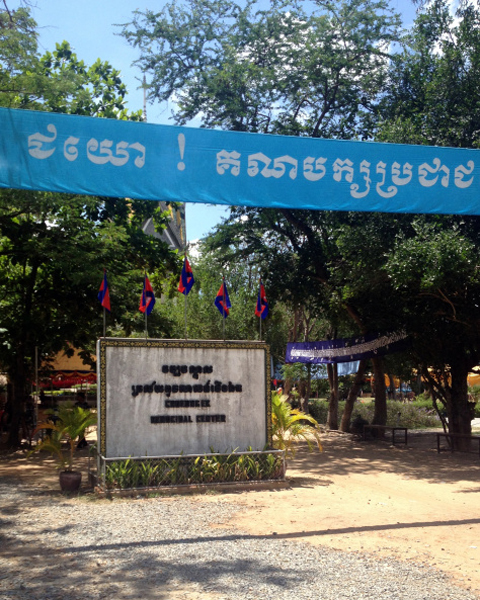
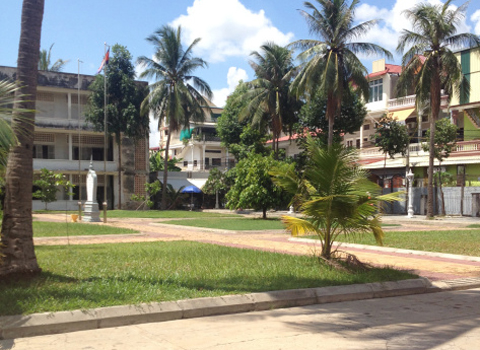
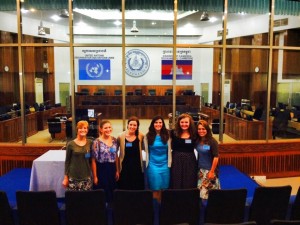
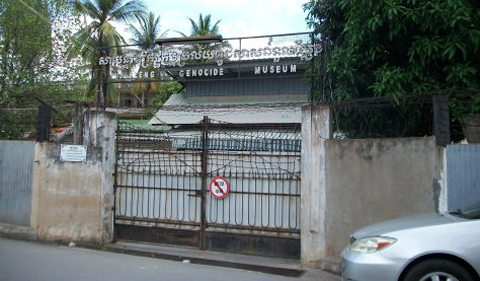

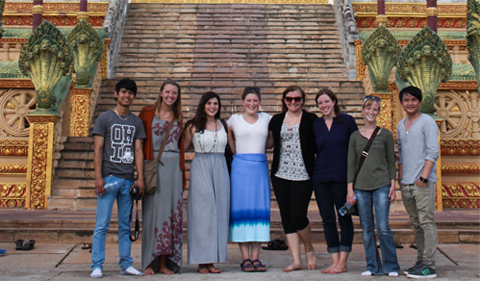













Comments